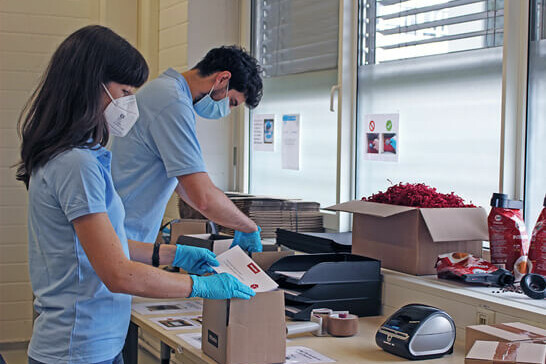Ultrafuse® PET
For outstanding printing results
Made from a premium PET, easy to print and a large operating window for printing. (Temperature vs. speed)

Material Details
- Technical Data Sheet: EN, FR, ES, DE, ZH
- Safety Data Sheet: EN, other languages
- Printing Profiles
Description
Ultrafuse PET is made from a premium PET and prints as easy as PLA, but is much stronger. The filament has a large operating window for printing (temperature vs. speed), so it can be used on every 3D-printer. PET will give you outstanding printing results: a good layer adhesion, a high resolution and it is easy to handle. Ultrafuse PET can be 100% recycled, is watertight and has great colors and finish.
Ultrafuse® PET is based on food-safe raw materials (granulate), which are suitable for food contact applications according to the European Plastics Regulation. Further, this material is evaluated for Food-Safe 3D printed applications and meets the requirements according to LFGB and Regulation (EC) No. 1935/2004. To learn more, read the full article regarding Food-Safe 3D Printing Applications here.
Sustainability Check

Recycled Packaging

Generally recyclable
Benefits at a Glance
- Watertight prints possible
- Easy to print like PLA
- Premium food-approved raw material
- Good layer adhesion
- Easy to handle
Example Applications
- Jigs & fixtures
- Automotive parts
- Prototyping
Material Properties
- Tensile Strength (MPa): 17.2 (ZX), 33.4 (XY)
- Flexural Modulus (MPa): 1826 (ZX), 1840 (XZ), 2063 (XY)
- Elongation at Break: 1.1 % (ZX), 2.7 % (XY)
- Impact Strength Izod notched (kJ/m2): 1.8 (ZX), 1.9 (XZ), 2.1 (XY)
- Impact Strength Izod unnotched (kJ/m2): 4.1 (ZX), 7.7 (XZ), 12.3 (XY)
- HDT @ 0.45 MPa: 63 oC
Printing Guidelines*
- Nozzle Temperature: 210-230 °C
- Build Chamber Temperature: -
- Bed Temperature: 60 - 80 °C
- Bed Material: Glass
- Nozzle Diameter: ≥ 0.4 mm
- Print Speed: 40-150** mm / s
* The product data is provided in good faith and represents typical properties based on our current knowledge and experience; these data are not to be construed as specification limits or mini- mum values. Product properties may be changed without notice. This document does not create any liability, warranty or guarantee of product performance. It is the buyer’s responsibility to determine the suitability of Ultrafuse® products for the intended application.
** To achieve faster printing speeds, it may be necessary to raise the nozzle temperature. The highest speed mentioned has been determined through our latest tests, ensuring optimal surface quality with a 0.4mm nozzle and 0.2mm layer height. Please note that as printing technology and equipment evolve, we anticipate the possibility of achieving even faster speeds in the future.
Use Cases and Whitepaper of Ultrafuse® PET
Unlocking Additive Manufacturing for food-contact Parts
The unparalleled possibilities of Additive Manufacturing are compelling to countless industries – food-related applications are certainly no…
Fixtures for Danish Design Faucets
Leading Danish design brand VOLA is prized for high-end taps and interior fixtures that beautifully express Scandinavian taste and style. Flanking…
Next Steps
Get in touch
Do you have questions about our materials, technologies or services? Get in touch now!
More Ultrafuse® Standard Filaments
Ultrafuse® rPET
Sustainability Meets High Performance with Ultrafuse® rPET
Benefits at a Glance
- Sustainable alternative to PET
- Easy to print Great end results
Ultrafuse® PP
Ultrafuse PP is a high-performance thermoplastic with low density, high elasticity, and high resistance to fatigue.
Benefits at a Glance
- Tough and strong
- Fatigue resistant
Ultrafuse® PLA
PLA, Poly-Lactic-Acid is one of the most used materials for 3D printing and is available in a wide range of colors.
Benefits at a Glance
- Large color range
- Easy to print
Ultrafuse® ABS
Strong, flexible, and has a high heat resistance. ABS is a preferred plastic for engineers and professional applications.
Benefits at a Glance
- Long life span
- Very tough




